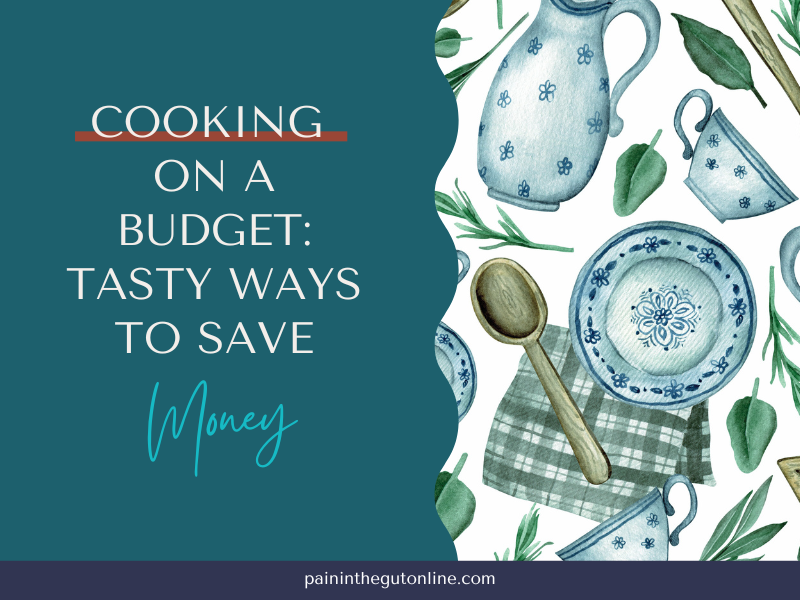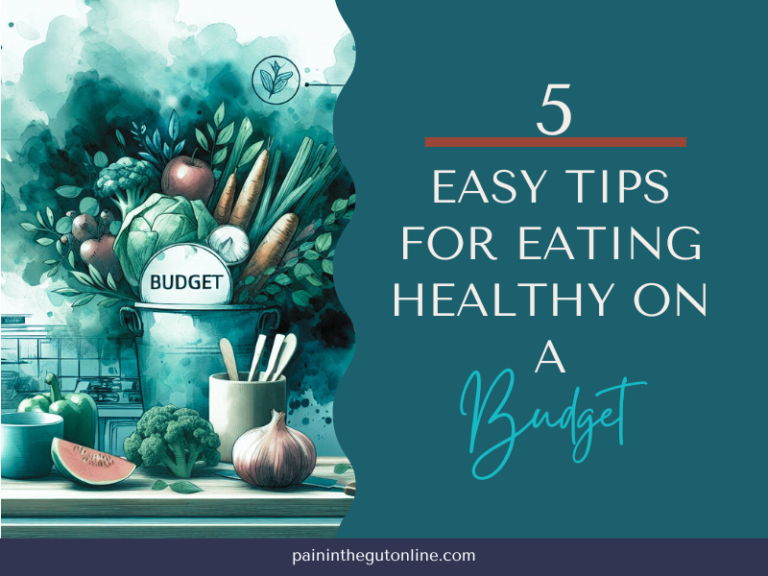COOKING ON A BUDGET
13 min read/2,877 words
Cooking on a budget has never been more delicious! Whip up wallet-saving wonders in your kitchen. Get thrifty with our tips!

Table of Contents
Budget-Friendly Cooking
Welcome to the world of budget-friendly cooking, where deliciousness and thriftiness go hand in hand! Cooking on a budget doesn’t mean you have to sacrifice flavor or creativity. In fact, it can be a thrilling adventure that will save your wallet and tickle your taste buds.
So, let’s dive in and explore the joy of budget-friendly cooking while embracing your inner thrifty chef.
The Joy of Budget-Friendly Cooking
Picture this: you’re in the kitchen, armed with a handful of ingredients and a pinch of creativity. As you whip up a meal that won’t break the bank, you start to feel a sense of accomplishment and pride. The joy of budget-friendly cooking comes from the satisfaction of creating something delicious and nourishing while being mindful of your finances.
Not only does cooking on a budget allow you to save money, but it also allows you to experiment with flavors, try new recipes, and develop your culinary skills. It’s like a puzzle where you find clever ways to stretch your ingredients and make the most out of what you have.
So, put on your apron and let the budget-friendly cooking adventure begin!
Embracing Your Inner Thrifty Chef
Now, let’s talk about embracing your inner thrifty chef.
Channel your inner MacGyver and get creative in the kitchen! This is your chance to think outside the box and make magic happen with what’s already in your pantry. Embracing your thrifty side means being resourceful and finding ways to maximize your ingredients and minimize waste.
Take a look at what you have on hand and let your imagination run wild.
Can that leftover chicken be transformed into a flavorful stir-fry? Can those wilting vegetables be turned into a hearty soup? With a little imagination and some culinary know-how, you’ll be amazed at the tasty dishes you can create while keeping your budget intact.
Remember, being a thrifty chef doesn’t mean compromising on taste.
It’s about finding affordable ingredients, using smart cooking techniques, and discovering the joy of making something delicious from scratch. So, let’s grab our spatulas, sharpen our knives, and embark on a budget-friendly cooking journey that will tickle your taste buds and save your wallet.
Next we’ll get into the nitty-gritty of budget-friendly cooking, including meal planning, grocery shopping tips, cooking hacks, and more. Get ready to explore the world of budget-friendly healthy meals and discover the wonders of budget meal prep. Let’s make every meal a scrumptious and wallet-friendly delight!
Planning Your Pocket-Pleasing Meals

When it comes to cooking on a budget, planning your meals in advance is key.
By taking the time to strategize and shop smartly, you can save both money and time in the kitchen. In this section, we’ll explore two key aspects of budget-friendly cooking: mastering meal planning and utilizing grocery shopping tips.
Mastering Meal Planning on a Budget
Meal planning is a savvy approach to ensure you make the most of your ingredients and avoid unnecessary food waste. By mapping out your weekly meals, you can strategically use ingredients in multiple dishes and stretch your budget further.
Here are some simple steps to master meal planning on a budget:
- Create a weekly meal plan: Start by deciding on the meals you want to prepare for the week ahead. Consider using recipes that utilize similar ingredients to minimize waste and save money.
- Check your pantry: Before you head to the store, take a quick inventory of your pantry and fridge. Make note of the ingredients you already have on hand and incorporate them into your meal plan. This helps you avoid buying unnecessary duplicates and ensures you use up what you already have.
- Build a shopping list: Based on your meal plan, create a shopping list of the ingredients you need. Stick to your list while at the store to avoid impulse purchases.
- Prep in advance: Once you’ve purchased your groceries, prepare ingredients in advance. Chop vegetables, marinate meats, and portion out snacks to make cooking during the week more efficient. This will save you time and reduce the temptation to order takeout on busy nights.
By mastering the art of meal planning, you can eliminate the stress of last-minute decisions and stay on track with your budget-friendly cooking goals.
Budget-Friendly Grocery Shopping Tips
When it comes to grocery shopping on a budget, a little strategy goes a long way.
By following these budget-friendly grocery shopping tips, you can stretch your dollars and still enjoy delicious meals:
- Make a list and stick to it: Before heading to the store, create a detailed shopping list based on your meal plan. Having a list helps you stay focused and avoid purchasing unnecessary items. Remember, every dollar counts!
- Compare prices: Take the time to compare prices of different brands and products. Generic or store brands often offer similar quality at a lower price. Look for sales and discounts, and consider buying in bulk for items with a longer shelf life.
- Shop seasonally: Opt for fruits and vegetables that are in season. Not only are they more affordable, but they also tend to be fresher and tastier.
- Avoid convenience foods: Packaged and processed foods often come with a higher price tag. Instead, choose whole foods and prepare them yourself. This not only saves money but also allows you to have control over the ingredients and flavors.
By implementing these budget-friendly grocery shopping tips, you can make the most of your money and enjoy satisfying meals without breaking the bank.
Getting Creative in the Kitchen

Cooking on a budget doesn’t mean sacrificing flavor or creativity in the kitchen.
It can be an opportunity to explore new cooking hacks, ingredient substitutions, and money-saving tricks that will impress your taste buds without breaking the bank.
Cooking Hacks for Budget-Conscious Chefs
When you’re cooking on a budget, it’s essential to make the most of every ingredient and minimize waste.
Here are some cooking hacks to help you stretch your budget even further:
- Embrace the power of meal planning: Planning your meals in advance allows you to make a shopping list based on the ingredients you already have and avoid unnecessary purchases. By knowing exactly what you need, you can focus on buying affordable ingredients and quantities that won’t go to waste.
- Utilize your freezer: Freezing leftovers, excess ingredients, and even herbs can help extend their shelf life and reduce food waste. Soups, stews, and casseroles are excellent candidates for freezing and can be enjoyed later when you’re in need of a quick and budget-friendly meal.
- Get friendly with canned and frozen foods: Canned and frozen fruits, vegetables, and proteins are often more affordable than fresh alternatives and can be just as nutritious. Incorporate them into your meals to add variety and save money. Just be sure to check the labels for added sugars or sodium.
- Make your own stock: Instead of buying pre-packaged stock, save vegetable scraps, chicken bones, or beef bones to make your own flavorful stock. This not only saves money but also allows you to control the ingredients and reduce food waste.
Ingredient Substitutions and Money-Saving Tricks
Don’t let the lack of a specific ingredient discourage you from trying new recipes.
With a bit of creativity and resourcefulness, you can find suitable ingredient substitutions that won’t compromise flavor.
Here are some money-saving tricks and ingredient substitutions to keep in mind:
- Explore your spice rack: Spices can add depth and flavor to your dishes without the need for expensive ingredients. Experiment with different spice combinations to elevate simple ingredients and create budget-friendly culinary masterpieces.
- Opt for cheaper cuts of meat: Budget-friendly cuts of meat like chicken thighs, drumsticks, or tougher cuts like chuck roast can be transformed into delicious and tender dishes with the right cooking techniques. Slow cooking or marinating can help tenderize these cuts and infuse them with flavor.
- Think beyond meat: Incorporating more plant-based proteins like beans, lentils, and tofu into your meals can be a cost-effective way to add protein and variety to your diet. They are often more affordable than meat and can be just as satisfying when prepared with flavorful seasonings and spices.
- Buy in bulk and store smartly: Purchasing non-perishable items in bulk can save you money in the long run. Just make sure you have proper storage containers to keep these ingredients fresh and protected from moisture and pests.
By getting creative in the kitchen and implementing these cooking hacks and ingredient substitutions, you can enjoy delicious meals while sticking to your budget.
The Art of Repurposing Leftovers
When you’re cooking on a budget, making the most of your leftovers is a skill worth mastering. Not only does it help reduce food waste, but it also saves you money by transforming last night’s dinner into a whole new and delicious meal.
Let’s explore some creative ideas for reinventing your leftovers.
Reinventing Last Night’s Dinner
Don’t let your leftovers go to waste! Instead, think of them as a canvas for creating new culinary masterpieces.
Here are some fun and easy ways to reinvent your leftovers:
- Taco Tuesday Remix: If you have leftover roasted chicken or beef, why not turn it into flavorful tacos or fajitas? Simply warm up the meat, add your favorite taco seasoning, and serve it in tortillas with fresh toppings like salsa, guacamole, and shredded cheese. It’s a budget-friendly way to give your leftovers a Mexican twist.
- Stir-Fry Magic: Leftover vegetables, cooked rice, and proteins like chicken or shrimp can be transformed into a tasty stir-fry. Sauté the vegetables, add the proteins and rice, and stir in some soy sauce or other seasonings for added flavor. Voila! You have a brand new meal with minimal effort.
- Pizza Party Remix: Got leftover pasta or pizza sauce? Use it as a base for a homemade pizza. Top it with any leftover veggies, meats, or cheeses you have on hand, and bake until the crust is golden and the cheese is bubbly. It’s a fun and customizable way to turn your leftovers into a family-friendly meal.
Leftover Makeover: From Bland to Grand
If your leftovers are lacking excitement, fear not! With a few simple additions and tweaks, you can elevate them from mundane to marvelous.
Here are some ideas to transform your leftovers:
- Soup Revamp: Leftover roasted vegetables, chicken, or beef can be transformed into a comforting soup. Just simmer them in a flavorful broth with some herbs and spices. You can even add some cooked grains or legumes to make it heartier. It’s a budget-friendly way to warm your soul on a chilly day.
- Pasta Perfection: Leftover cooked pasta can be turned into a delicious pasta salad by adding some fresh veggies, herbs, and a tangy dressing. You can also toss it with some sautéed garlic, olive oil, and grated cheese for a simple yet satisfying dish. Get creative with your add-ins and make it your own.
- Savory Sandwiches: Leftover meats, such as roasted turkey or chicken, can be transformed into mouthwatering sandwiches. Layer them with some crunchy lettuce, ripe tomatoes, and your favorite condiments. You can also add some sliced cheese or avocado for extra flavor and creaminess. It’s an easy and satisfying way to enjoy your leftovers on the go.
By embracing the art of repurposing leftovers, you can stretch your food budget without sacrificing taste or variety. So, the next time you have leftovers sitting in your fridge, let your imagination run wild and create something new and exciting.
Remember, the best meals are often born out of creativity and a pinch of resourcefulness. Happy cooking!
DIY Kitchen Staples and Savings
When cooking on a budget, one way to save money is by making your own kitchen staples instead of buying them from the store.
Not only can this help you cut costs, but it also allows you to control the ingredients and customize the flavors to your liking.
Let’s explore the benefits of homemade versus store-bought items and discover some easy recipes for DIY condiments and pantry staples.
Homemade vs Store-Bought: Which Saves More?
Making your own kitchen staples can often be more cost-effective than buying them from the store. While it may require a little extra time and effort, the savings can be significant in the long run.
Let’s compare the costs of homemade versus store-bought items in the table below:
| Kitchen Staple | Homemade Cost | Store-Bought Cost |
|---|---|---|
| Tomato Sauce | $0.50 per cup | $1.25 per cup |
| Salad Dressing | $0.30 per cup | $0.75 per cup |
| Salsa | $0.40 per cup | $1.00 per cup |
| Bread Crumbs | $0.10 per cup | $0.50 per cup |
As you can see, making these staples at home can save you a significant amount of money. Plus, you have the added benefit of knowing exactly what goes into your food and avoiding any unnecessary additives or preservatives.
Easy Recipes for DIY Condiments and Pantry Staples
Now that you’re ready to embrace the world of homemade kitchen staples, here are a few easy recipes to get you started:
Tomato Sauce
Ingredients:
- 2 cups of canned tomatoes (crushed or diced)
- 1 small onion, finely chopped
- 2 cloves of garlic, minced
- 1 tablespoon of olive oil
- 1 teaspoon of dried basil
- 1 teaspoon of dried oregano
- Salt and pepper to taste
Instructions:
- Heat the olive oil in a saucepan over medium heat. Add the chopped onion and minced garlic, and cook until they are soft and fragrant.
- Add the canned tomatoes, dried basil, dried oregano, salt, and pepper. Stir well to combine.
- Reduce the heat to low and let the sauce simmer for about 20-30 minutes, until it thickens to your desired consistency.
- Use an immersion blender or a regular blender to puree the sauce until smooth. Alternatively, you can leave it chunky if you prefer.
- Taste the sauce and adjust the seasonings if needed. Add more salt, pepper, or herbs to suit your taste.
- Allow the sauce to cool completely before storing it in an airtight container in the refrigerator. It will keep for about a week.
Salad Dressing
Ingredients:
- 1/4 cup of olive oil
- 2 tablespoons of vinegar (such as balsamic, red wine, or apple cider)
- 1 teaspoon of Dijon mustard
- 1/2 teaspoon of honey or maple syrup
- Salt and pepper to taste
Instructions:
- In a small bowl, whisk together the olive oil, vinegar, Dijon mustard, honey or maple syrup, salt, and pepper until well combined.
- Taste the dressing and adjust the seasonings to your preference. Add more salt, pepper, or sweetener if desired.
- Pour the dressing into a jar or airtight container and refrigerate for at least 30 minutes to allow the flavors to meld together.
- Shake well before using and drizzle over your favorite salads or vegetables.
With these simple recipes, you can start saving money and adding your own personal touch to your meals. Get creative in the kitchen, experiment with different flavors, and enjoy the satisfaction of making your own homemade kitchen staples.
Remember, cooking on a budget doesn’t mean sacrificing taste or quality.
Eating In vs Dining Out: The Budget Battle
When it comes to satisfying your hunger, you face a never-ending battle between eating in and dining out. Both options have their perks, but if you’re on a budget, it’s time to weigh the costs and make a smart choice.
The Cost of Convenience
Dining out may seem like the easier option, but it comes at a price.
Restaurants not only charge you for the delicious food they serve, but also for the convenience and experience they provide. From the moment you step into a restaurant, you pay for the ambiance, the service, and the pleasure of having someone else cook and clean up after you.
Let’s break it down with some numbers.
On average, dining out can cost you around $15 to $30 per person for a single meal. If you eat out for lunch and dinner every day, that adds up to a whopping $420 to $840 per month! Imagine what you could do with that money if you chose to cook more at home.
Bringing the Restaurant Home: Budget-Friendly Recipes
Cooking at home doesn’t mean sacrificing flavor or enjoyment.
In fact, you can recreate your favorite restaurant meals right in your own kitchen, all while saving a considerable amount of money.
Here are a few budget-friendly recipes that will make you feel like a master chef without breaking the bank:
| Recipe | Estimated Cost |
|---|---|
| Homemade Pizza Margherita | $8-$10 |
| Stir-Fried Noodles with Veggies and Tofu | $6-$8 |
| Baked Lemon Herb Salmon with Roasted Vegetables | $10-$12 |
| Spaghetti Aglio e Olio (Garlic and Oil Pasta) | $4-$6 |
By preparing these meals at home, you can enjoy delicious flavors while keeping your wallet happy. Plus, you have control over the ingredients, allowing you to make healthier choices and cater to any dietary restrictions or preferences.
So, the next time you find yourself torn between eating in and dining out, remember the cost of convenience and the joy of creating restaurant-quality meals in your own kitchen.
Your taste buds and your wallet will thank you!
As you can see, healthy cooking on a budget doesn’t have to be difficult. I hope you found this article helpful. If you did, please check out our other articles before you go!








